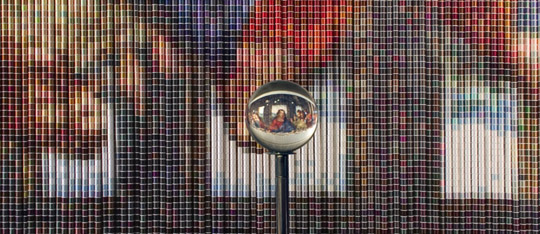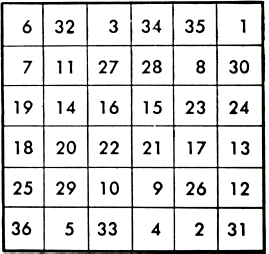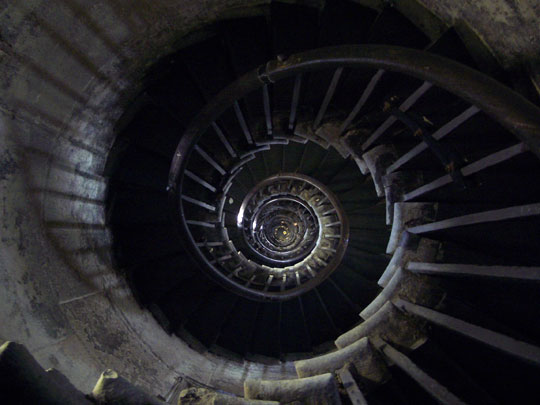Fooling Your Cones = Color Illusion
Monday, June 26th, 2006If you stare at the dot for 30 seconds without moving your eyes you will be shocked at the colors you see.Â
Here’s how it works. The first image is a constant brightness image with the hues (colors) reversed- it is not just a negative. The constant brightness makes the rods in the eye perceive the b&w image accurately. But the cones are fatigued by the colors. Therefore when they see white, which is a full spectrum, in the b&w image they don’t respond to the fatigued colors, and thus perceive the opposite ‘true’ colors. Â
This is a very interesting demonstration that color is not merely physics, i.e., the color of an object is not merely the colors that are not absorbed. Color depends on what the neurons tell the brain, and how the brain interprets it.
Birds and reptiles have 4 types of cones that detect 4 different frequencies. Along the way mammals lost 2 of these cones. So dogs have very poor color vision (seeing eye dogs distinguish traffic lights by position!). Fortunately for primates, a duplicated cone gene came into use, so we humans have 3 types of cones (long, medium, short or RGB, though ‘R’ is closer to yellow at its peak sensitivity). But 2 of the 3 cones (both attached to the X chromosome – which males have only one of, hence the prevalence of colorblindness in males) are very close in peak frequency, unlike the widely separated 4 cones in birds and reptiles. So not only can birds and reptiles see in more colors than humans , such as “invisible” ultraviolet, they can outsee us in colors. At least, except for owls, we have them beat in 3D with binocular vision.
Do you see a 2 or a 5?

























